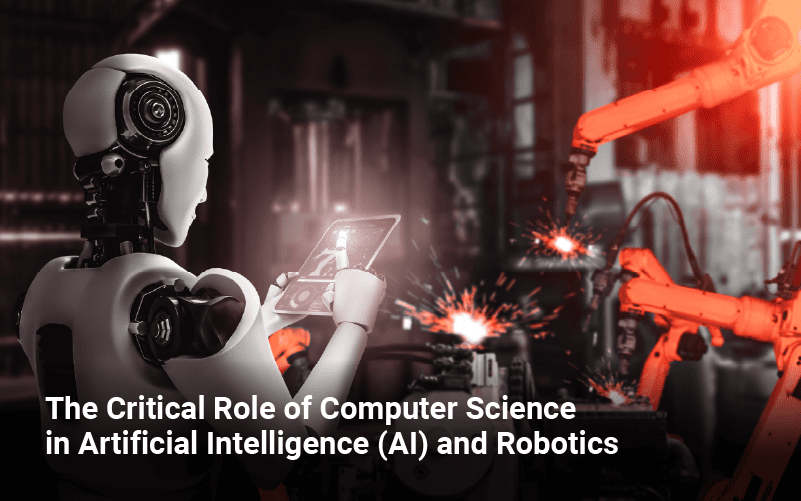The world of cybersecurity is constantly evolving, and staying ahead of the curve is essential for protecting sensitive information and preventing cyberattacks. With new technologies emerging all the time, it can be challenging to keep up with the latest trends and developments. In this blog post, we will explore some of the newest cybersecurity technologies and how they can help keep your data safe.
Why opt for the Latest Cybersecurity Technologies?
In the current digital era, the frequency and complexity of cyber threats are increasing. It is imperative that individuals and organizations stay up-to-date on the latest Cybersecurity technologies in order to effectively combat these threats and safeguard sensitive data. It is essential to remain vigilant as new threats emerge daily.
Cybercriminals are becoming more sophisticated in their tactics, and as a result, data breaches are becoming increasingly common. Some of the latest Cybersecurity threats include phishing attacks, ransomware, social engineering, and IoT attacks. These malicious activities can cause significant financial losses, reputational damage, and even legal liability.
Staying ahead of the curve in Cybersecurity is crucial for preventing cyberattacks and protecting sensitive data. Adopting the latest Cybersecurity technologies enables organizations to enhance their security posture and mitigate potential risks. By doing so, organizations can safeguard their information and protect themselves from potential threats. In a nutshell, staying current with the latest Cybersecurity technologies is no longer an option, it is a necessity to ensure the safety of sensitive data and the integrity of business operations.
Some of the Latest Cybersecurity Technologies Include:
- Artificial Intelligence (AI) and Machine Learning (ML): Artificial Intelligence and Machine Learning are revolutionizing the cybersecurity industry. These technologies analyze vast amounts of data, learn from patterns, and make predictions about potential threats. By utilizing these technologies, cybersecurity experts can identify and respond to threats faster and more accurately than ever before.
- Behavioral Biometrics: Behavioral biometrics is a new approach to cybersecurity that uses machine learning algorithms to analyze user behavior. This technology can detect patterns in the way users interact with devices, such as typing speed, mouse movement, and navigation. By analyzing these patterns, behavioral biometrics can identify potential threats, such as hackers who have gained access to a user’s account.
- Zero Trust Architecture: Zero trust is a security model that requires strict identity verification for every person or device that tries to access an organization’s network or resources. This model assumes that no one is trusted by default, even if they are within the organization’s network perimeter. Zero trust architecture has gained popularity in recent years due to the increasing number of cyberattacks targeting businesses and organizations.
- Blockchain: Blockchain technology is most associated with cryptocurrencies, but it has the potential to transform cybersecurity as well. By creating a decentralized database, blockchain can provide secure storage for sensitive information. Because there is no central authority controlling the data, it is much more difficult for hackers to gain unauthorized access.
- Quantum Computing: Quantum computing is a technology that uses quantum mechanics to process data. It has the potential to solve complex problems much faster than traditional computers. While this technology is still in its infancy, it has the potential to revolutionize the field of cybersecurity by allowing more secure encryption.
- Cloud Security: Cloud computing has become an essential part of many businesses, but it also introduces new security risks. Cloud security technologies are emerging to address these risks, such as multi-factor authentication, encryption, and access controls. By utilizing these technologies, businesses can ensure that their data is secure in the cloud.
- Internet of Things (IoT) Security: IoT devices are becoming more prevalent in homes and businesses, and they are often vulnerable to cyberattacks. IoT security technologies include encryption, access controls, and monitoring to protect IoT devices and the data they collect.
In conclusion, staying ahead of the curve in cybersecurity requires a deep understanding of the latest technologies and trends. These are just a few of the latest developments in cybersecurity technologies. As the threat landscape continues to evolve, it’s likely that new technologies and strategies will emerge to help businesses and organizations protect their data and networks from cyberattacks. By incorporating these emerging technologies into your cybersecurity strategy, you can better protect your sensitive information and prevent cyberattacks. Remember, cybersecurity is an ongoing process, and it is essential to stay up to date with the latest developments to ensure that your data stays safe.
FAQs:
Ans. The latest technologies in cybersecurity include Artificial Intelligence (AI) and Machine Learning (ML), Behavioral Biometrics, Zero Trust Architecture, Blockchain, Quantum Computing, Cloud Security, and IoT Security. These technologies are continually evolving to combat the increasing frequency and complexity of cyber threats.
Ans. The five stages of cybersecurity, also known as the cybersecurity lifecycle, are:
- Identify: This stage involves identifying the assets and data that need to be protected and assessing the risks associated with them.
- Protect: In this stage, measures are put in place to safeguard the identified assets and data from potential threats.
- Detect: This stage involves the implementation of systems and processes to detect any potential cybersecurity threats or incidents.
- Respond: In the event of a cybersecurity incident, this stage involves taking action to contain and mitigate the impact of the incident.
- Recover: This stage involves the process of restoring systems and data to their pre-incident state, as well as evaluating and improving the organization’s overall cybersecurity posture.
Ans. Yes, there is a good future in cybersecurity. With the increasing amount of sensitive information being stored online and the rise of cyber threats, the demand for cybersecurity professionals is growing rapidly. According to the Bureau of Labor Statistics, employment of information security analysts is projected to grow 31% from 2019 to 2029, which is much faster than the average for all occupations. Moreover, cybersecurity offers a diverse range of career paths, with opportunities in areas such as network security, cloud security, digital forensics, and ethical hacking. As technology continues to advance and cyber threats become more sophisticated, the need for skilled cybersecurity professionals will only continue to grow.








